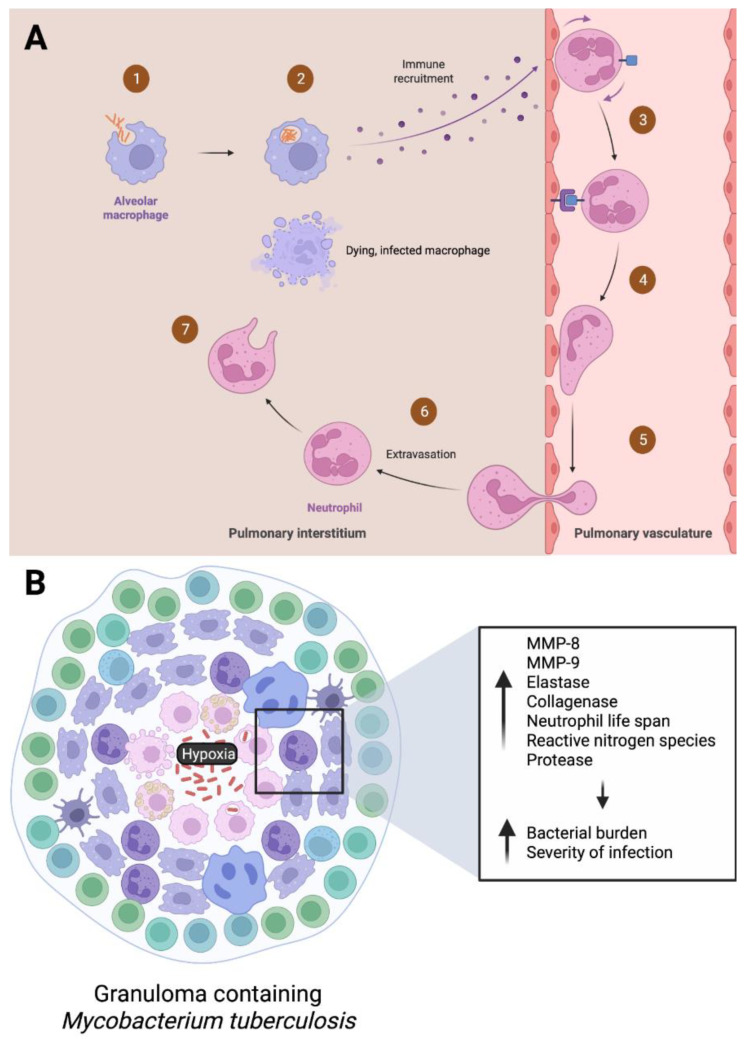Figure 2.
Neutrophil response during an active and latent M. tb. infection. During an (A) active infection, alveolar macrophages encounter, and phagocytose M. tb. This results in chemokine release and initiation of margination, rolling, adhesion, and extravasation of neutrophils to the infected site. If the macrophages are unable to eliminate the pathogen themselves, neutrophils may phagocytose the dying, infected macrophages. (B) LTBI commonly occurs via granuloma formation, where the immune system works to contain M. tb. Hypoxic conditions within granulomas have been shown to increase the secretion of enzymes matrix metalloproteinase 8 and 9 (MMP-8, MMP-9), elastase, collagenase, and proteases as well as increase neutrophil life span and reactive nitrogen species. Unregulated neutrophil inflammation contributes to increased bacterial burden and severity of TB infection.

